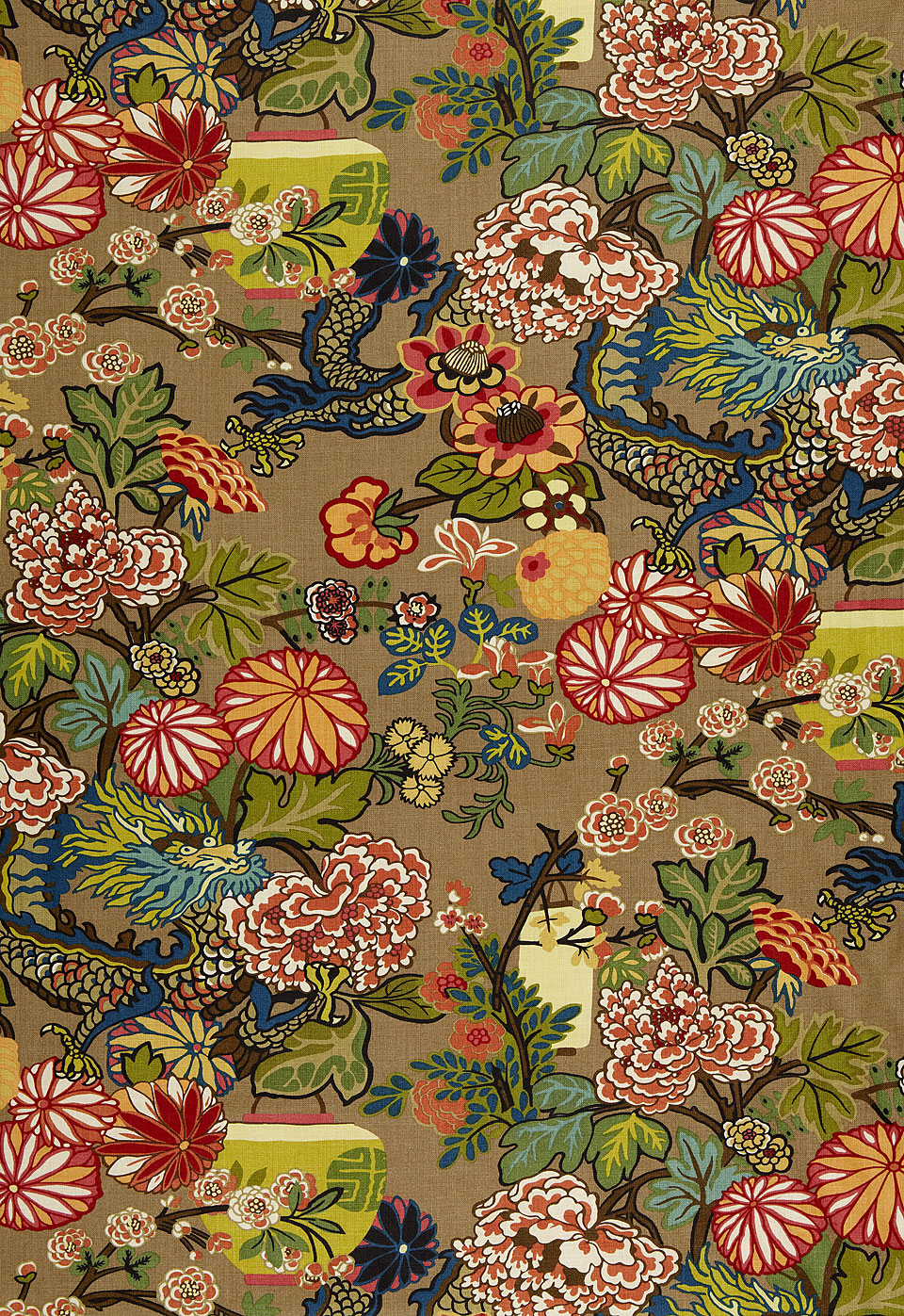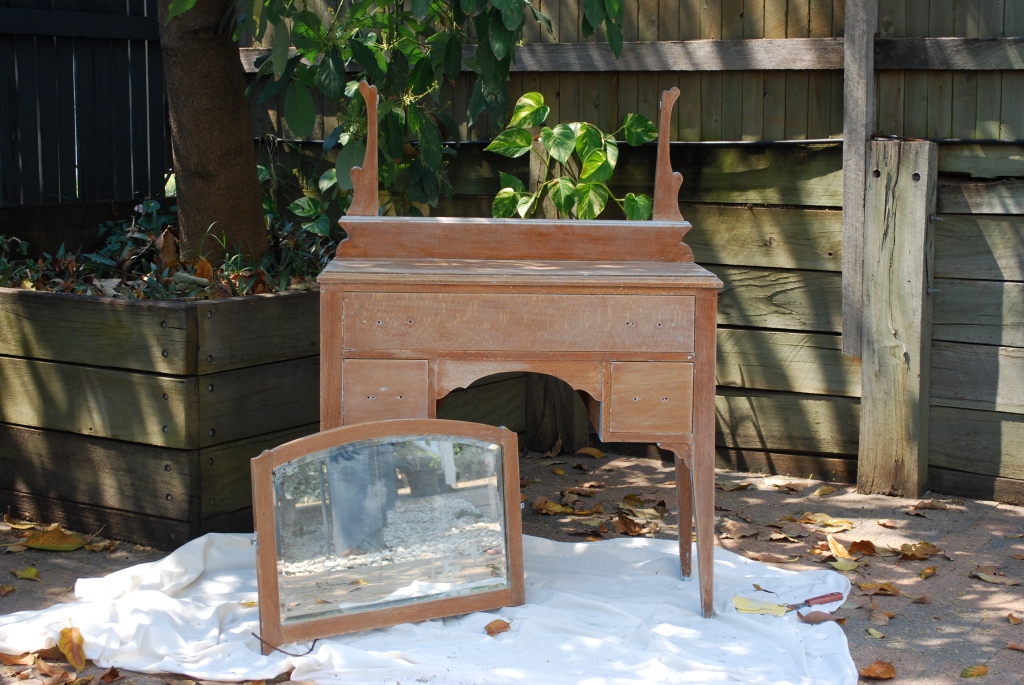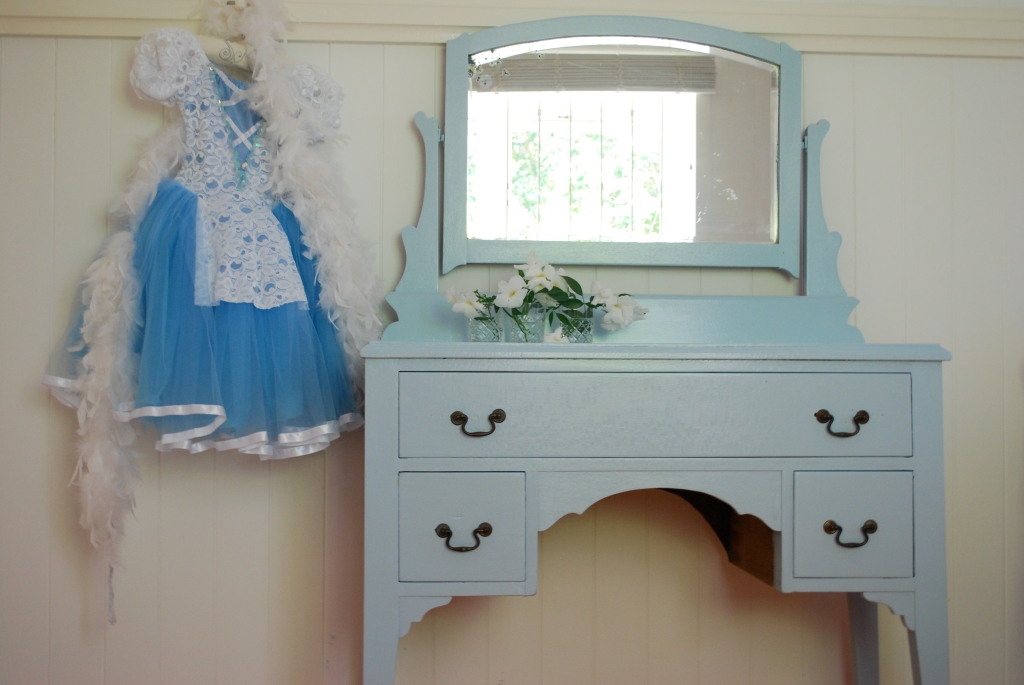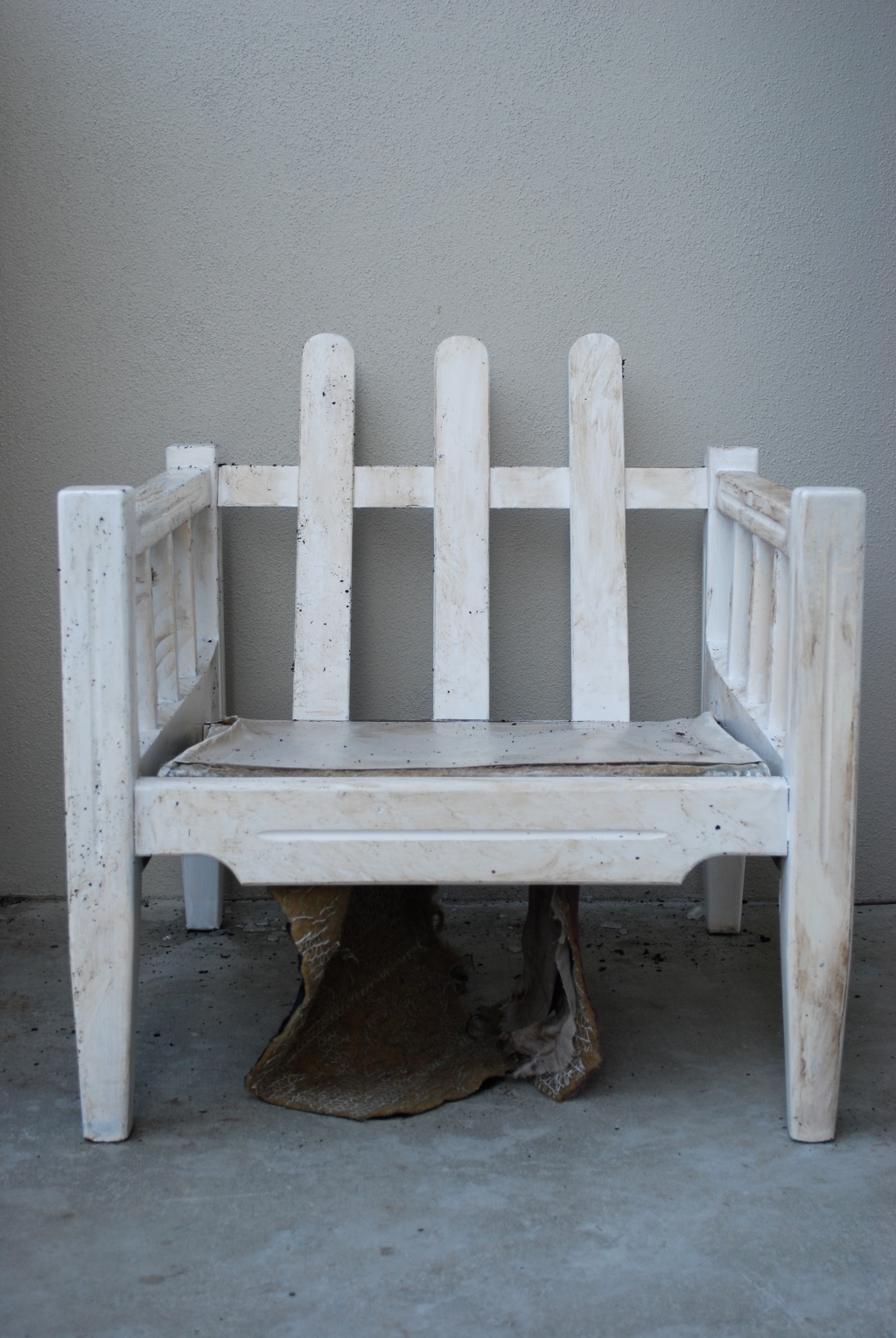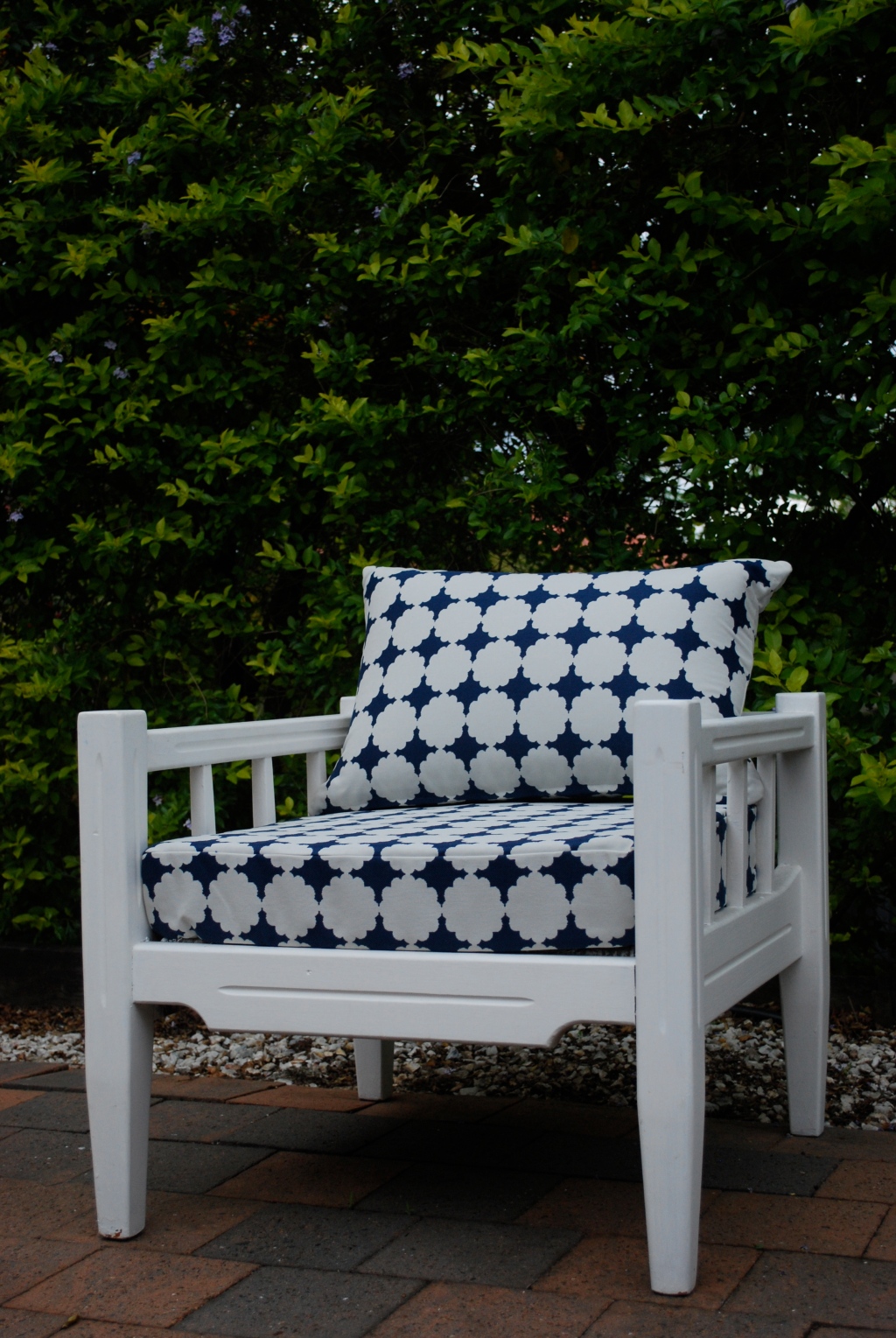Before & After – Vintage Chair
These are my favourite chairs, I found them at a local garage sale for only $300 each – a few people were shocked that I’d paid that much at a garage sale – but they were the real deal, so trust me, it was a bargain. I had one of them professionally re-covered for my book (by Parry & William’s Upholsterers – they’re the best, been around for a long time). Played it safe fabric-wise with a gorgeous thick linen from Mokum (‘Mica’ in Cigar) – and now I’m ready to have the other one re-covered – and I want to be a little more daring – I want to do a pattern but because of the deep buttoning detail, will have to choose a small patterned fabric – I’m liking this one from Schumacher, ‘Chiang Mai Dragon’ in Mocha…let you know how it goes!
Photos of vintage chair by Anastasia K – from our book, ‘New Vintage’




